Sun helmets were used by nearly all the colonial powers in East Asia an, but three local nations also utilized a wide range of sun/pith helmets. These include of course Japan, which during the Second War World used a variety of patterns of helmets; and Vietnam, which adopted a variation of French Model 1931 that was produced locally and made this pattern its own.
The other power that wore sun helmets is actually the nation that used sun helmets the longest in the region, and which ironically is overlooked when considered in the grand history of this form of headdress. This of course is Thailand, formerly known as Siam.
The history of the use of sun helmets in Thailand goes back to the second half of the 19thcentury during the reign of King Chulalongkorn (1868-1910), who was also known as Rama V. As a reformer he helped modernize the nation, and managed to fend off colonial rule. However, during his reign the nation lost its claims to land that today makes up modern Cambodia, Laos and parts of Burma.
As both King Chulalongkorn and his father King Mongkut – both of whose lives were chronicled in the fictionalized story Anna and the King of Siam, which was later turned into the musical The King and I – had looked to the west to modernize the Siamese Army, this included adopting the sun helmet.
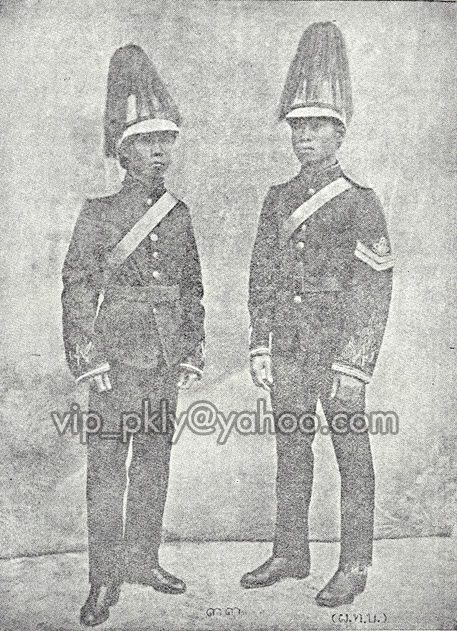
A black and white photo shows the ceremonial guard uniforms for the period 1908-1912 (Photo courtesy of Vip K.)
The earliest helmets, of which only a few remain in private collections and in museums, appear to be British made helmets – likely from India. These were used until the 1920s when the Thailand began to purchase military arms and equipment from Europe. This included French and Belgian made steel helmets.
Collector/Historian Vip K. noted:
“Between 1900 and the early 1920s it appears that the field army traded the helmets for British-style peaked caps; the sun helmet came back in vogue during the seventh reign and saw its usage extended right up to the late 1930s, by which time side caps and steel helmets became the headgear of choice.”
When World War II broke out in Europe, Thailand looked to use the war as an opportunity to regain territories ceded to the French in 1893 and 1904. The result was a small-scale war with Vichy France. Following this the Thai Government under Luang Pibulsonggram, the military dictator known as Phibun, allowed the Japanese passage through the nation when Japan declared war on the United Kingdom. The result was that Thailand became a de facto Axis power.
During the war the Thais used various Japanese supplied equipment and large supplies of captured French and British arms and equipment as well. Following the war Thailand received little punishment for its wartime role under Phibun, who was removed from power in 1944 but returned following a second coup in the 1950s.
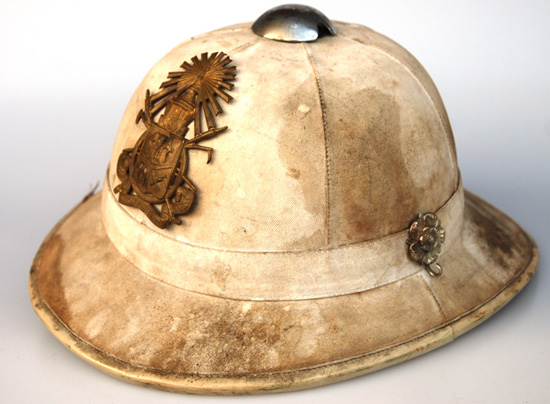
A Thai Army sun helmet with ventilator cap and chinchain hooks
The Thai Army used large quantities of Japanese arms and equipment in the 1950s and 1960s, and this included Japanese helmets – both steel and sun helmets – with Thai badges added. The Thai military continued to use sun helmets, which is to be expected given the hot and humid climate.
A variety of helmet patterns was adopted, but most seem based on the French M31 sun helmet, with six seams and a uniform round shape. These helmets were often fitted with chinchain and spike, but a ventilator cap was worn as well. This pattern helmet was in use through the early 1990s for border guard and river patrol troops.
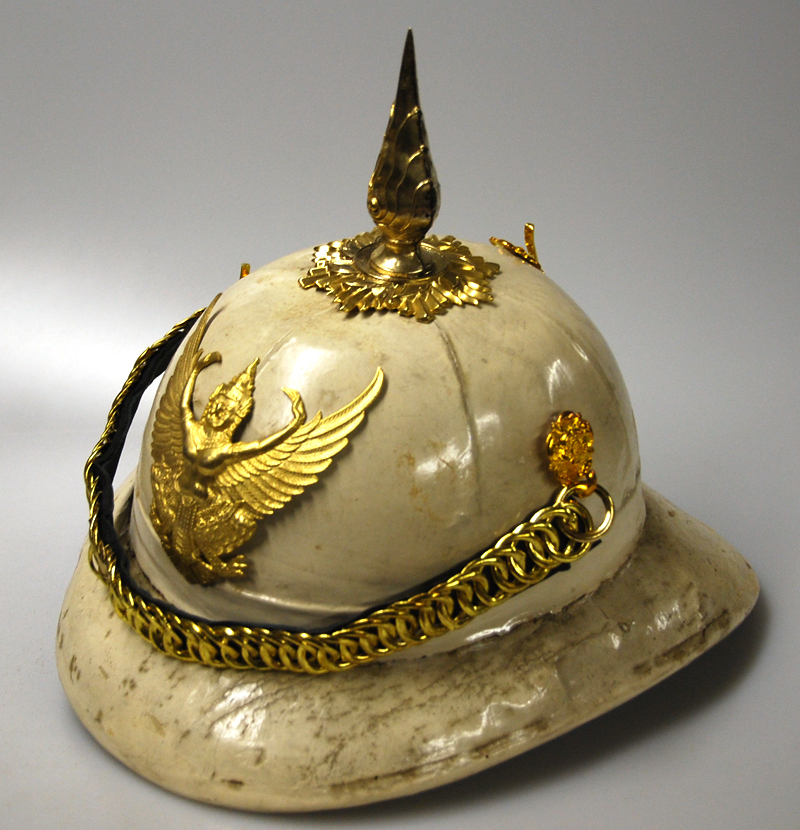
A post-World War II cork helmet – these have been replaced by a similar pattern helmet made of plastic
While the role of the monarchy has been largely ceremonial since 1932, the King of Thailand still retains a bodyguard and those troops can be seen wearing a modern sun helmet, which was based on the post-World War II designs. What is interesting about these helmets is that these are now made of plastic rather than cork or sola pith.
The helmets feature metal fittings, including spikes – which vary in height depending on the duty of the soldiers. The plastic helmets are produced in both a white version for use in the summer with the white tunics, and in a winter version in khaki.
It appears that the various royal guards are the only units that still use the sun helmets, but this is fitting as it was likely that the Royal Guards of King Rama V were the first to do so nearly 140 years ago.
Additional information courtesy of Vip K., along with the photos of the ceremonial uniforms, and the Royal Thai Army Museum (http://afewroundsmore.wordpress.com/2010/09/27/royal-thai-army-museum/).

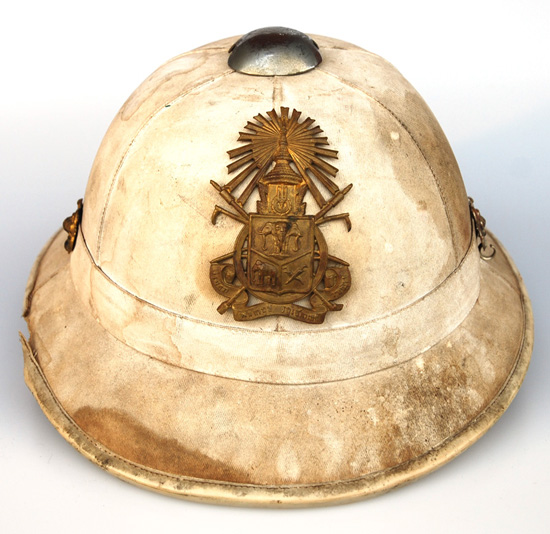
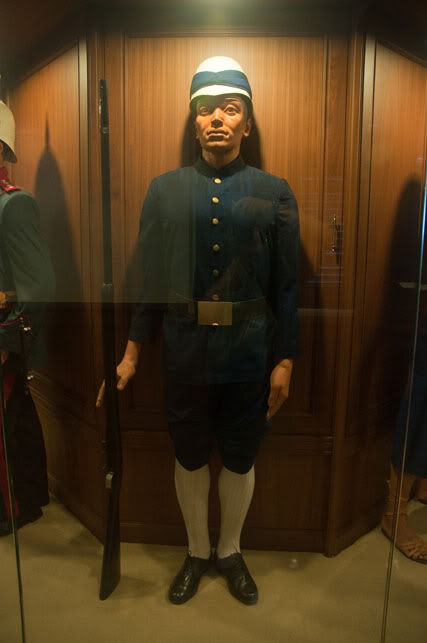
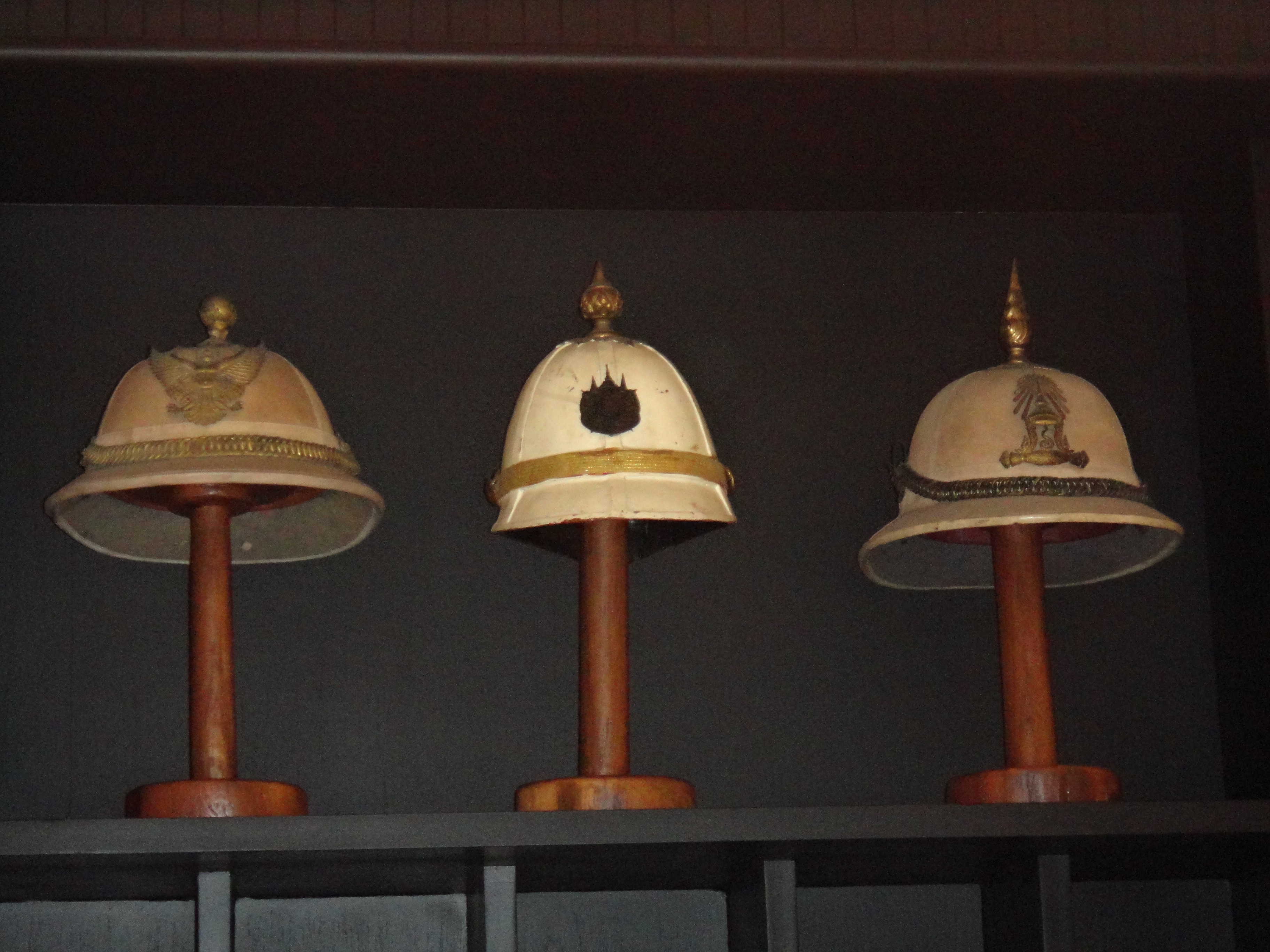
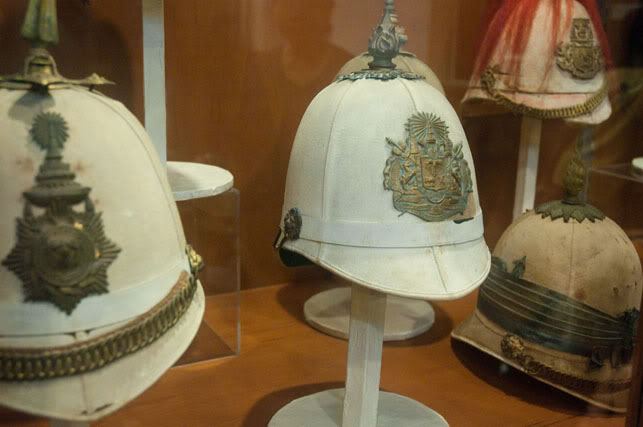
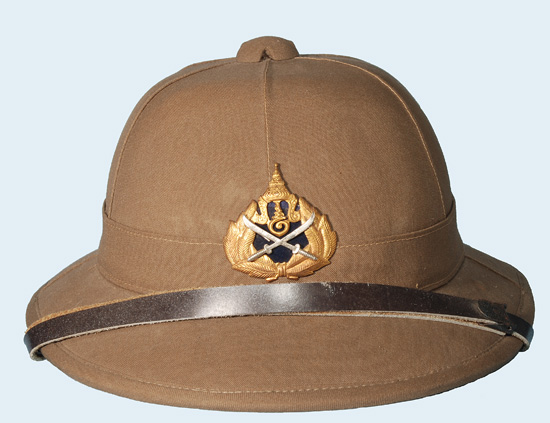
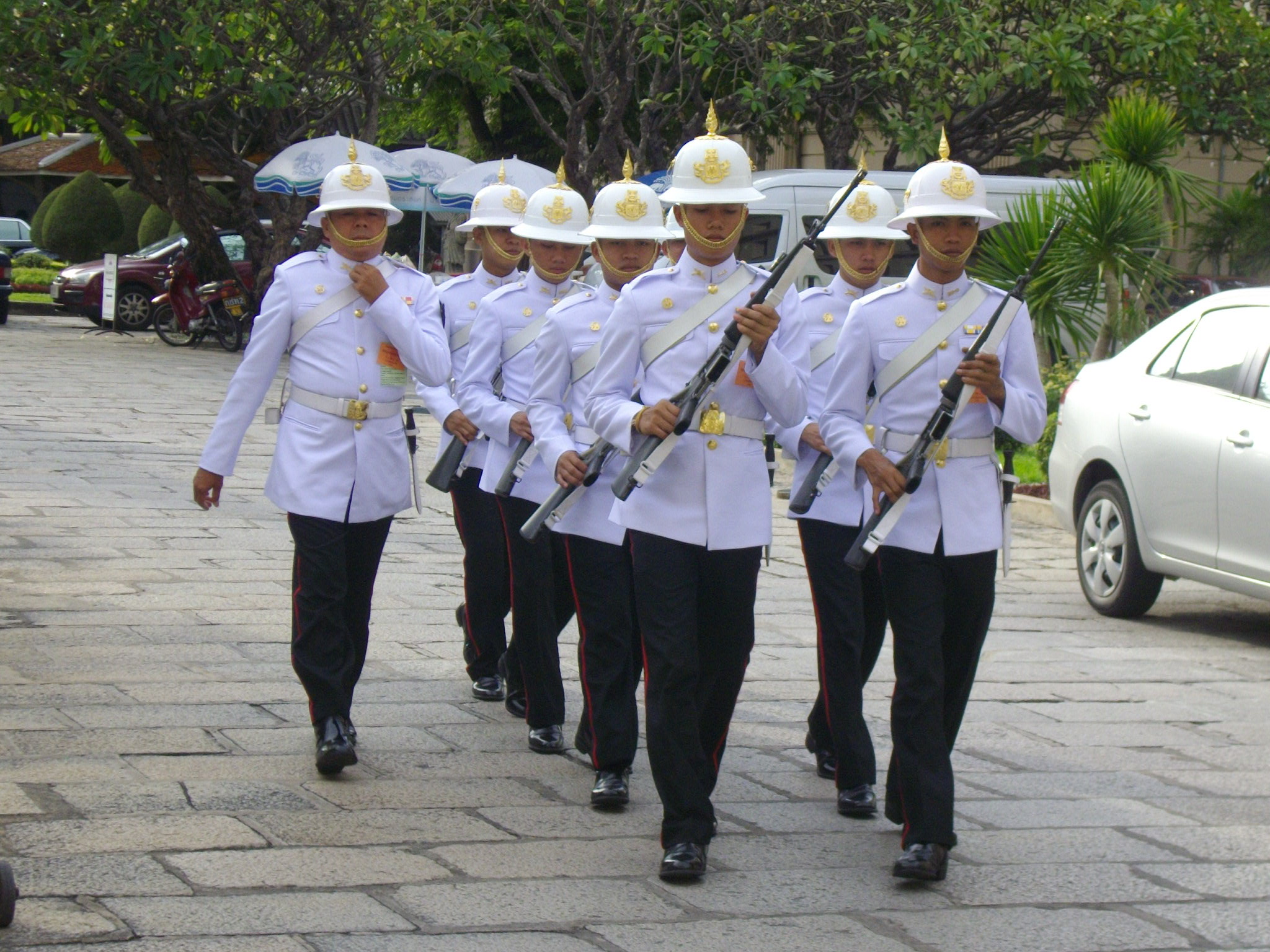
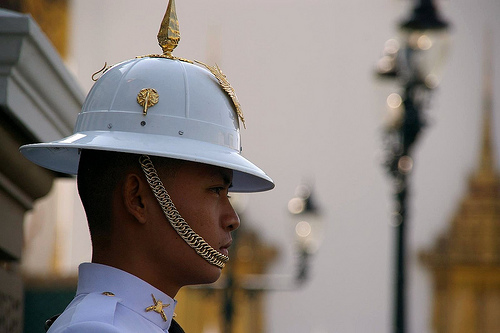
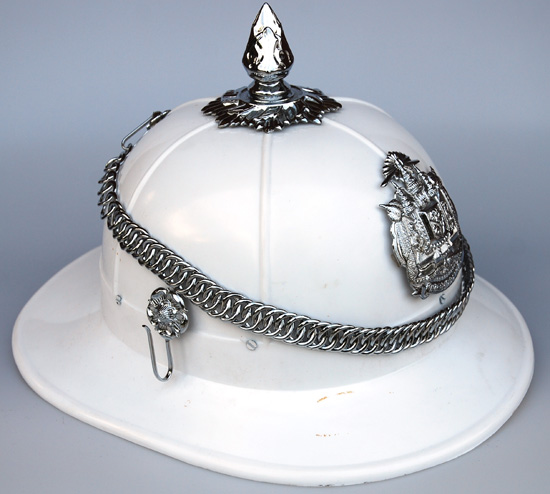
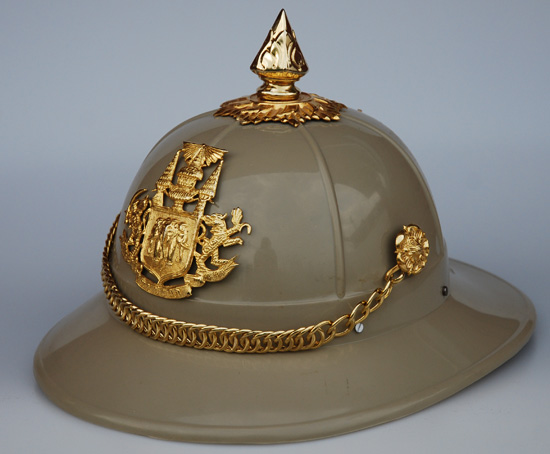
My father was a US advisor to the Thai 11th Regiment “The King’s Bodyguards” from 1968 – 1970. At that time a regular sun helmet was worn, not the plastic helmet you show at . He has a photo of himself with the regiment’s commander, Col. Yuthasak who has the helmet with a blue horse-tail plume. Indeed, my father still has this helmet at his home.
Regards,
–Guy Power
I need to buy the borderl guard helmet .
Also, Thailand does not have ‘border guard’ but ‘border police’ which the unit uses normal National Coat-of-Arms badge like other police unit.
Thailand ‘river patrol troops’ are Navy guys and they used the Royal Thai Navy Crown & Ankhor badge.
Thank you.